
Digital Work Places, Part 2: Synchronous Environments
In Part 1 of our series on Digital Work Places, we considered how students might use these tools in an asynchronous environment or when partner work isn’t possible. When social distancing ceases to be a focus of concern, students will be able to pair up and work on a single device to play a game, much as they would with a real game board, spinner, or card deck. Until that day arrives, teachers are finding new ways to think about gameplay, even in synchronous environments. Let’s take a look at a few examples from Bridges classrooms.
Recognizing the fact that this year will start remotely, without the advantage of having first worked with students in-person, Mary Duden, a fifth grade Bridges teacher, begins by asking questions:
-
How might we get to know one another in a remote environment and create classroom climate and culture?
-
How can I create opportunities for students to engage in whole-class, small-group, and partner dialogue? What are the norms for discourse in a remote environment?
-
What digital norms are needed for successful Work Places?
-
How can I create opportunities for productive Work Place gameplay if students must maintain social distancing or are meeting remotely?
Last spring, Mary sometimes conducted breakout sessions during office hours. This year, she realizes that students will play games in breakout rooms without an adult always present. As she begins the year, Mary is carefully considering Work Place norms that will create opportunities for all students to take an active, engaged role. She suggests having the more passive student screen share and lead the mechanics of gameplay, such as drawing cards and rolling dice, and invite the other student to document student thinking on a record sheet. Last spring, her students quickly learned how to take a screenshot and write on it, another opportunity for the second partner to capture moments of gameplay.
Let’s take a look at some options for synchronous partner work in an online breakout room setting.
Grade 5, Unit 1, Module 1, Work Place 1A The Product Game
In The Product Game, players take turns placing one of the game markers on any factor, multiplying the two factors, drawing an X or O on the product, and writing an equation to match the combination.
If students were assigned to play the game in an online breakout room, one could share their screen. If desired, the second student could access a gameboard as well, allowing both players to document gameplay and check each other's work.
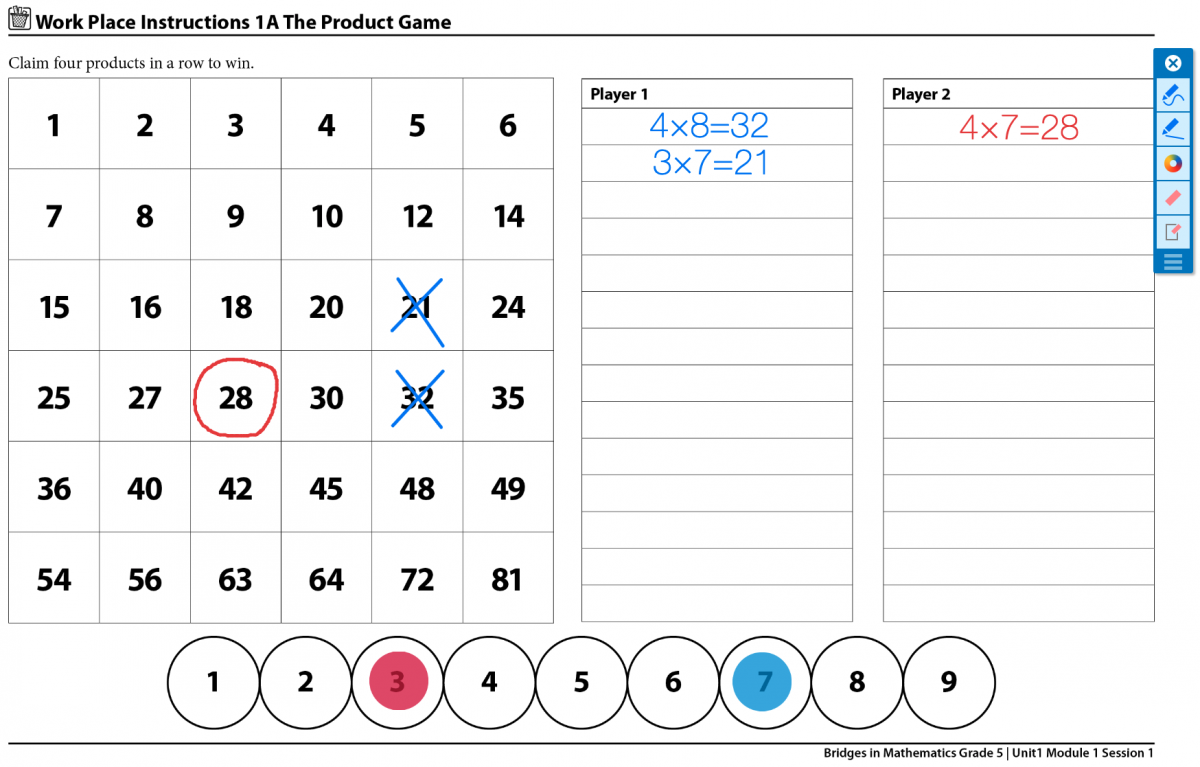
Both players could access a gameboard from their own devices, and keep track of gameplay.
To encourage the use of mathematical language, encourage active participation, and provide additional structure, the second player could focus gameplay with a sentence frame.
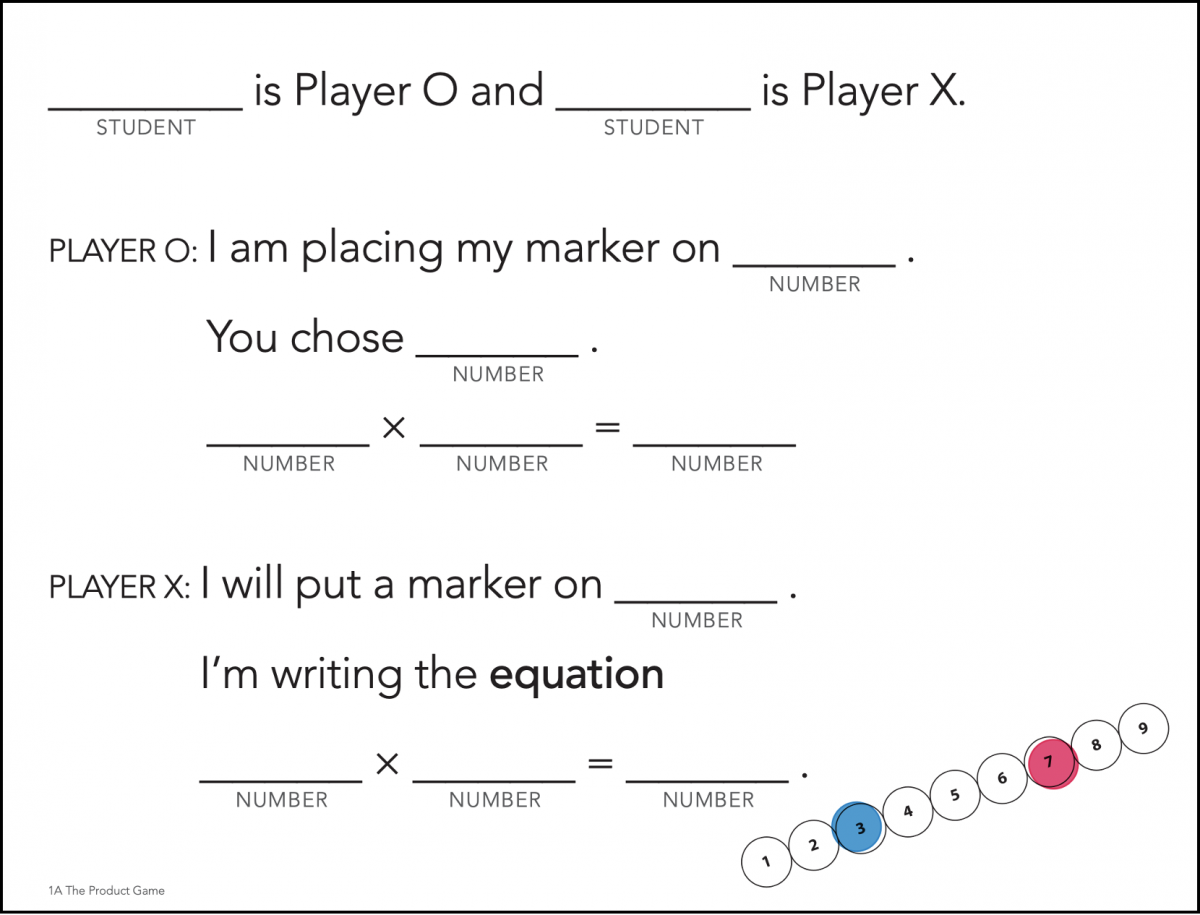
In the first game, one student could manage the gameboard while the second manages the sentence frame. In the next round, players could switch roles.
Using the Work Place Guide, the teacher could assign students a reflection question or two to use during the game. For example:
-
If you could choose a product to cover to try to get four in a row, which product would you pick? Now, is it possible to move one of the factor markers to get a factor pair for that product?
-
Is that the best possible move? What other moves might you make? Is it possible to block your opponent and help yourself get closer to winning at the same time?
-
Watch the moves your partner makes. Is there a move you would have made differently? Why?
Using the Text Tool, students can pause during the game to type reflections, screenshot their work, and send their responses to the teacher.
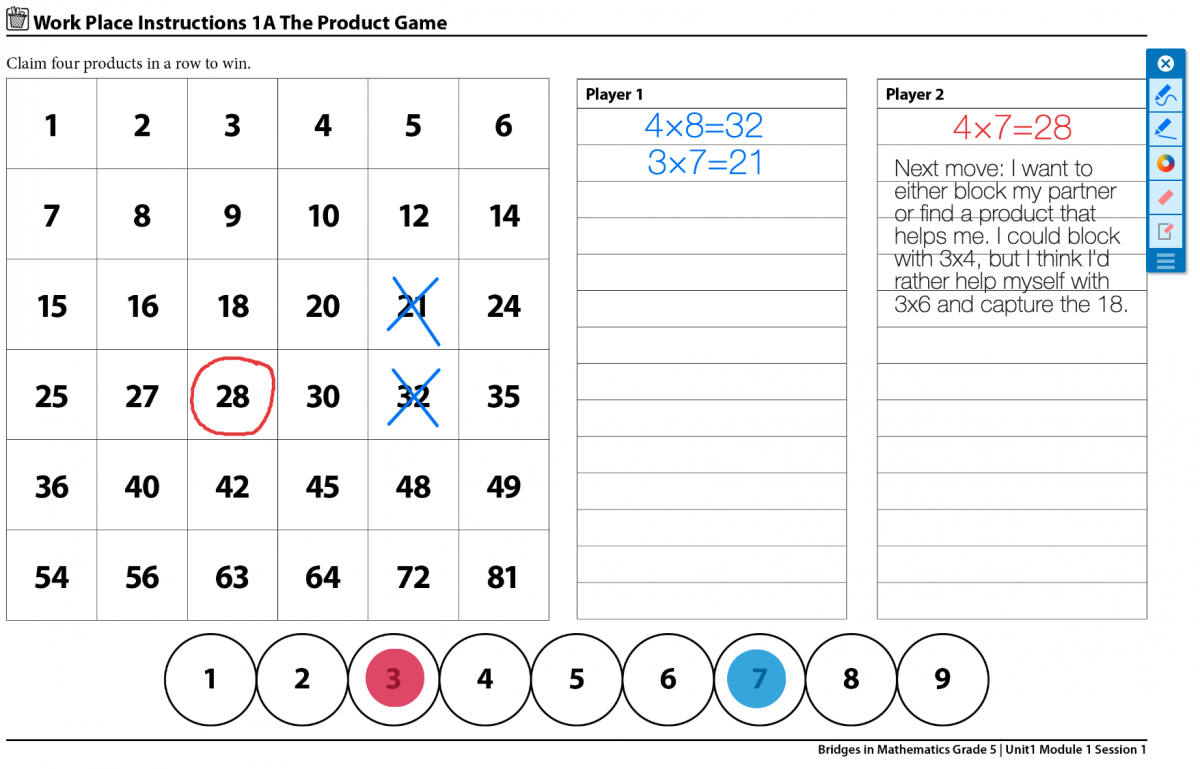
Work Place success depends on good modeling. Mary envisions teaching the rules of the game and examining the strategies first, as she would normally have done in a regular Problems & Investigations session. This will provide students with opportunities to think about the mathematics of the game before they consider the related tech tools, lessening the overall cognitive load.
As she considers the remote use of Work Places, Mary reflects, “If you have mathematical trust in children and you have trust that they are invested in working with each other, it will work.”
Just as our grade-level considerations differ for primary and intermediate classroom work, our interactions with various ages will also differ online. Bridges first grade teacher Sarah Carey tutored a small group this summer, enabling her to try out the Digital Work Places immediately upon release. She reflects on a recent game of Kindergarten Work Place 4C Beat You to Twenty: “I got more out of watching them play online in small groups than I was ever able to do at school.”
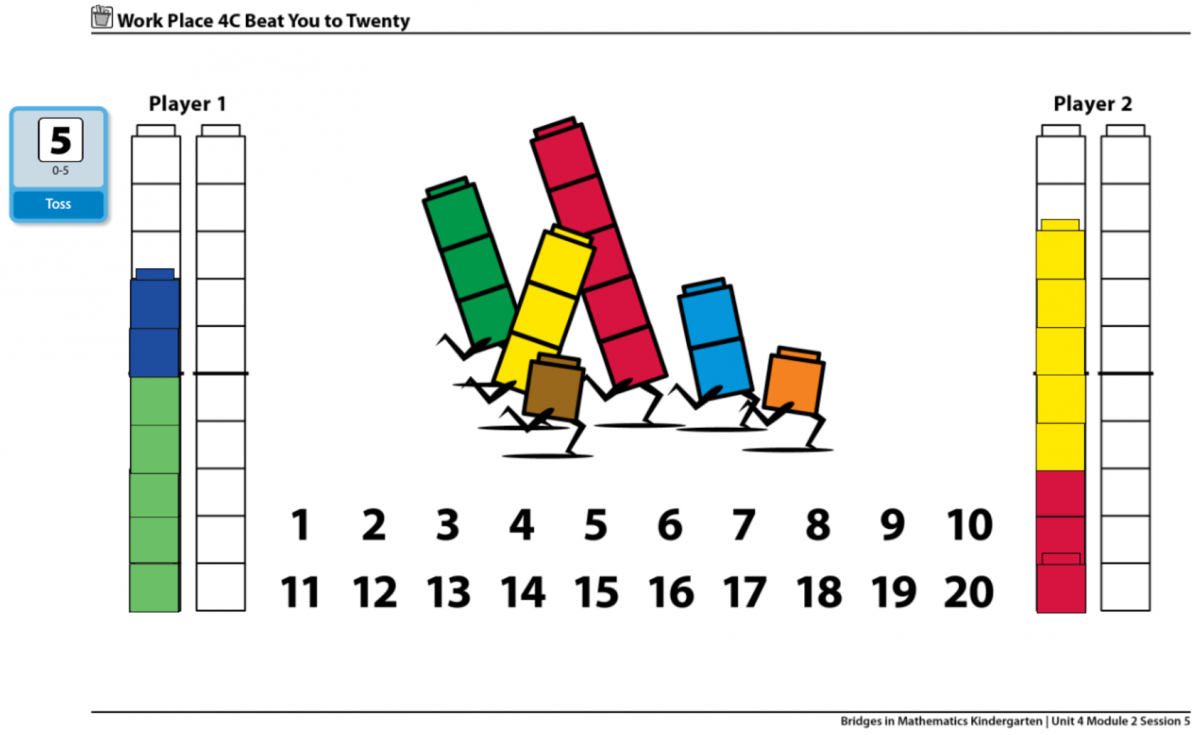
As she’s working with primary children, Sarah shares her screen and controls the digital aspects of gameplay but has students take turns explaining their thinking. Questions from the game instructions or the Work Place Guides provide teachers with opportunities to differentiate, and sentence frames add additional session structure.
-
How many cubes did you have on the game board?
-
How many cubes did you add?
-
How many cubes do you have now?
-
How many cubes do you need to make 5? 10? 20?
-
How many 10s and 1s do you have?
- Who has more? Who has less?
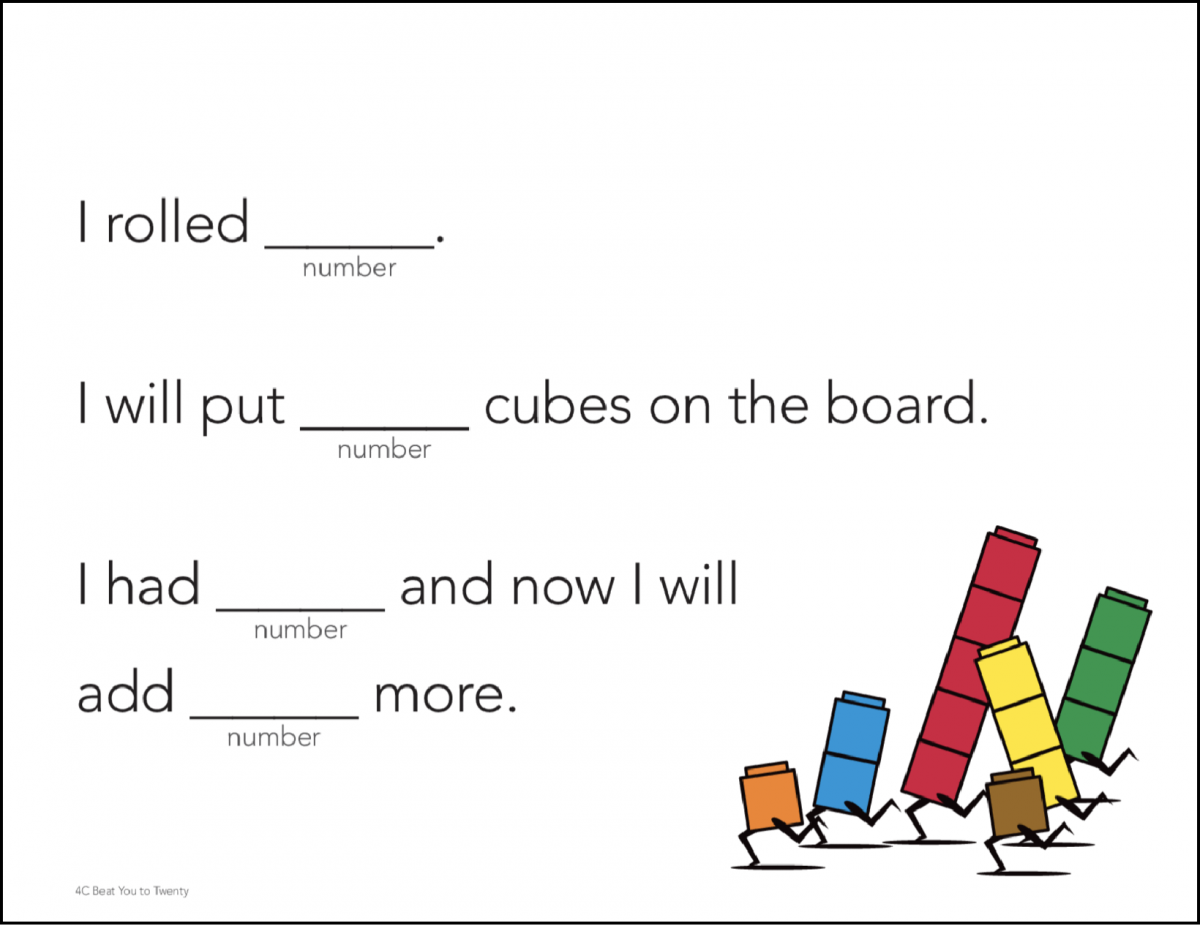
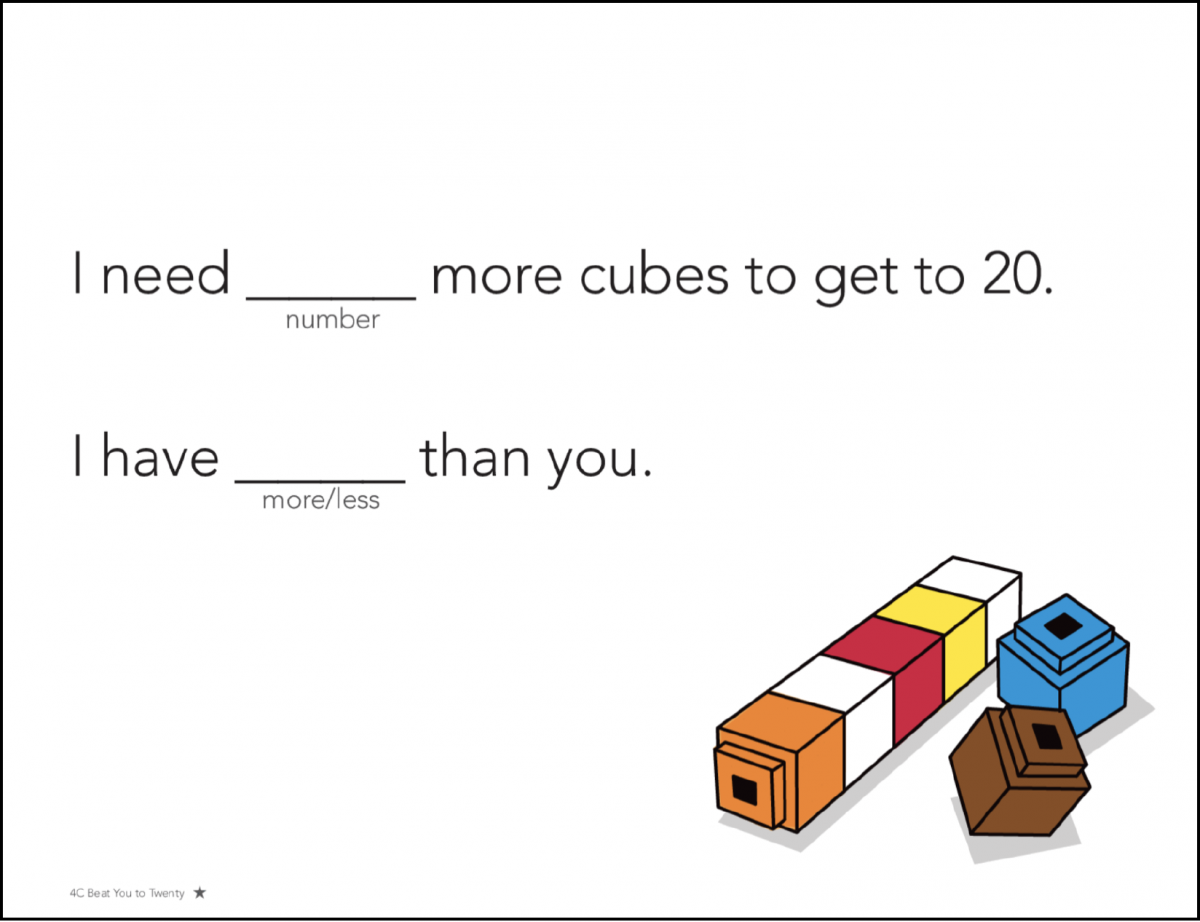
This year, when they can meet in the classroom, she plans to have students pair up and play on iPads. Virtually, she plans to meet with small groups. Last spring, she found it effective to have students play at home with family members, using physical copies of the game materials. “They loved it!” she says.
She is thoughtful in considering how to make the most use of reduced synchronous time. “I want to prioritize interaction with the child and between children. First graders need time to explain their mathematical thinking and hear from others.”
Along with opportunities to dialogue, all students benefit from experiences with concrete, representational, and abstract models. While remote work and social distance make this a challenge, we don’t want to underestimate the power — or the importance — of physical materials. Whenever possible, students can use physical manipulatives (see Bridges Materials Information) or a related app to show their thinking. They can record and share ideas on paper or printed student record sheets. The Number Pieces or Number Frames apps can also be used as whiteboards for students and shared with the teacher or classmates by using an image or sharecode.
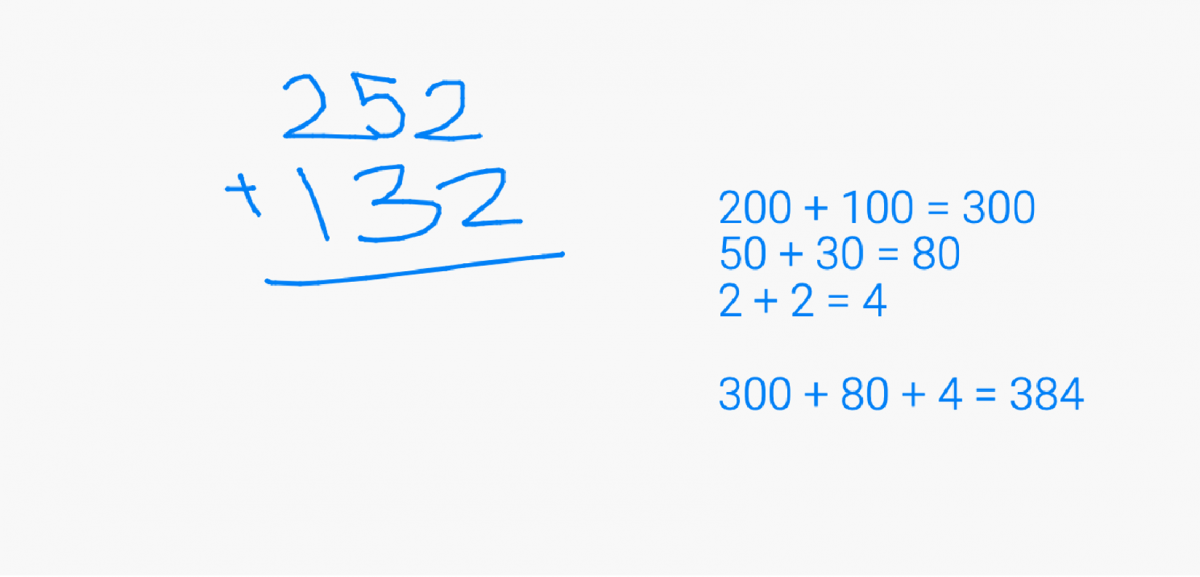
Work Places provide students with valuable skills practice, important in a normal school year, and perhaps even more important in the unprecedented COVID-19 situation. With a little creativity, Work Places can continue, creating opportunities for mathematical thinking and discourse, in synchronous and asynchronous environments.
What do Work Places look like for your class this year? We’d love to hear from you!